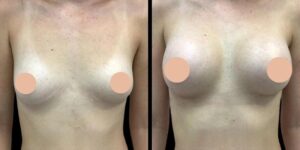
Breathing is something most of us take for granted—until it becomes difficult. A blocked or restricted nasal passage doesn’t just affect your ability to breathe; it can interrupt sleep, cause fatigue, and reduce your overall quality of life. That’s where rhinoplasty, a procedure often associated with cosmetic improvement, steps in with life-changing benefits. It’s more than just a nose job; it’s a functional transformation. One notable benefit of rhinoplasty is how it can improve nasal openings and enhance airflow. People who undergo Rhinoplasty Dubai Silicon Oasis often do so not just for aesthetics but to correct structural issues affecting breathing.
Understanding the Nasal Structure
The nose is more complex than it appears from the outside. Internally, it’s made up of bone, cartilage, soft tissue, and mucosa. The key structures involved in airflow include:
| Structure | Function |
|---|---|
| Nasal Septum | Divides the nasal cavity into two nostrils |
| Turbinates | Regulate airflow and humidity |
| Nasal Valves | Control the airflow volume and resistance |
| Cartilage Framework | Provides shape and supports nasal openings |
What is Functional Rhinoplasty?
Functional rhinoplasty is specifically aimed at improving the internal function of the nose, especially the nasal airways. Unlike cosmetic rhinoplasty, which reshapes the nose for aesthetic purposes, functional rhinoplasty focuses on the internal anatomy—correcting deformities that block or narrow the nasal passages.
How Rhinoplasty Improves Nasal Openings?
Straightening a Deviated Septum
A deviated septum is one of the most common reasons for obstructed airflow. During rhinoplasty, the septum is repositioned to the center of the nose, opening up the airways and allowing for better breathing.
Reducing Turbinate Size
Overly large turbinates can obstruct the nasal passages. Rhinoplasty can reduce their size or reposition them to create more space for airflow without compromising their function.
Reconstructing Nasal Valves
The nasal valves are the narrowest part of the airway. Weak or collapsed valves can significantly hinder airflow. Functional rhinoplasty often includes grafting techniques that support and widen these valves.
Correcting Asymmetry
Uneven nostrils or cartilage can affect the airflow balance between the two nasal passages. Reshaping the nostrils or nasal cartilage during rhinoplasty ensures better symmetry and functional efficiency.
Signs You Might Need Functional Rhinoplasty
| Symptoms | Possible Cause |
|---|---|
| Chronic nasal congestion | Deviated septum, enlarged turbinates |
| Mouth breathing during sleep | Nasal valve collapse |
| Difficulty breathing during exercise | Narrow nasal openings |
| Frequent sinus infections | Poor nasal drainage |
| Snoring or sleep apnea symptoms | Blocked nasal passages |
The Rhinoplasty Treatment Process
Understanding the step-by-step process can help you feel more comfortable if you’re considering the procedure.
Consultation and Assessment
-
Detailed nasal exam (internal and external)
-
Breathing assessment
-
Imaging or endoscopy if necessary
-
Discussion of medical history and symptoms
Treatment Planning
-
Determine whether functional, cosmetic, or both types of correction are needed
-
Tailor surgical plan based on individual anatomy
Surgery Day
-
Performed under general or local anesthesia
-
Incisions made inside the nose (closed) or between the nostrils (open)
-
Structures adjusted, removed, or supported using grafts
-
Nasal packing or splints applied post-surgery
Recovery Timeline
| Time Post-Surgery | What to Expect |
|---|---|
| Day 1–3 | Swelling, mild discomfort, and nasal congestion |
| Week 1 | External splint removed; initial breathing improvement may begin |
| Weeks 2–4 | Bruising fades; internal swelling continues to subside |
| Months 1–3 | Noticeable improvement in airflow and nasal structure |
| Months 6–12 | Final results with fully healed nasal tissues |
Long-Term Benefits of Improving Nasal Openings
Better Oxygen Intake
Improved nasal airflow means better oxygen delivery throughout the body, boosting energy and stamina.
Improved Sleep Quality
Many patients report fewer sleep disturbances and even resolution of mild sleep apnea symptoms after nasal airway correction.
Fewer Respiratory Infections
A well-functioning nose filters and humidifies air more effectively, reducing vulnerability to colds and sinus infections.
Enhanced Physical Performance
Athletes and fitness enthusiasts often notice better endurance due to unrestricted nasal breathing.
Is Functional Rhinoplasty Right for You?
Functional rhinoplasty isn’t only for those with trauma or congenital issues—it’s also a good option if you’ve experienced:
-
Long-term mouth breathing
-
Difficulty breathing after a failed previous nose surgery
-
Collapsed nasal passages due to aging or past injury
Differences Between Cosmetic and Functional Rhinoplasty
| Aspect | Cosmetic Rhinoplasty | Functional Rhinoplasty |
|---|---|---|
| Goal | Aesthetic enhancement | Improve breathing and airflow |
| Structures Involved | Mostly external | Both internal and external |
| Insurance Coverage | Typically not covered | May be covered if medically necessary |
| Recovery Time | Similar for both | Similar for both |
Can Rhinoplasty Help After an Injury?
Absolutely. Injuries from sports, accidents, or even old fractures can lead to a compromised nasal structure. Functional rhinoplasty not only restores appearance but also corrects internal damage that may have gone unnoticed for years.
FAQ’s:
Can rhinoplasty fix breathing problems caused by allergies?
Rhinoplasty can improve structural issues, but allergies are related to immune responses. However, by improving airflow, it may reduce the severity of allergy symptoms.
Will I still look like myself after rhinoplasty?
If the surgery includes only internal changes, your outward appearance may not change significantly. If combined with cosmetic work, your features will still look natural and proportional.
How long does functional rhinoplasty last?
The improvements in breathing are usually permanent unless there’s trauma or changes due to aging. Structural support like grafts ensures long-term results.
Is there an age limit for this procedure?
It’s generally performed after nasal development is complete—around 16 years old. There’s no upper age limit if you’re in good health.
How soon can I return to work or normal life?
Most people can return to work in 7–10 days, depending on the intensity of their job. Full recovery takes a few months.
Final Thoughts
Rhinoplasty is often underestimated as a purely cosmetic procedure, but its ability to improve nasal openings offers profound functional benefits. From better breathing to improved sleep and daily comfort, the impact can be life-changing. Whether you’re considering this for aesthetic refinement or to correct long-standing breathing problems, functional rhinoplasty can restore both confidence and comfort.



